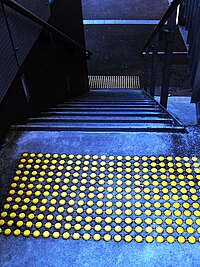
Photo from wikipedia
Orofacial somatosensory inputs may play a role in the link between speech perception and production. Given the fact that speech motor learning, which involves paired auditory and somatosensory inputs, results… Click to show full abstract
Orofacial somatosensory inputs may play a role in the link between speech perception and production. Given the fact that speech motor learning, which involves paired auditory and somatosensory inputs, results in changes to speech perceptual representations, somatosensory inputs may also be involved in learning or adaptive processes of speech perception. Here we show that repetitive pairing of somatosensory inputs and sounds, such as occurs during speech production and motor learning, can also induce a change of speech perception. We examined whether the category boundary between /ε/ and /a/ was changed as a result of perceptual training with orofacial somatosensory inputs. The experiment consisted of three phases: Baseline, Training, and Aftereffect. In all phases, a vowel identification test was used to identify the perceptual boundary between /ε/ and /a/. In the Baseline and the Aftereffect phase, an adaptive method based on the maximum-likelihood procedure was applied to detect the category boundary using a small number of trials. In the Training phase, we used the method of constant stimuli in order to expose participants to stimulus variants which covered the range between /ε/ and /a/ evenly. In this phase, to mimic the sensory input that accompanies speech production and learning in an experimental group, somatosensory stimulation was applied in the upward direction when the stimulus sound was presented. A control group (CTL) followed the same training procedure in the absence of somatosensory stimulation. When we compared category boundaries prior to and following paired auditory-somatosensory training, the boundary for participants in the experimental group reliably changed in the direction of /ε/, indicating that the participants perceived /a/ more than /ε/ as a consequence of training. In contrast, the CTL did not show any change. Although a limited number of participants were tested, the perceptual shift was reduced and almost eliminated 1 week later. Our data suggest that repetitive exposure of somatosensory inputs in a task that simulates the sensory pairing which occurs during speech production, changes perceptual system and supports the idea that somatosensory inputs play a role in speech perceptual adaptation, probably contributing to the formation of sound representations for speech perception.
Journal Title: Frontiers in Psychology
Year Published: 2022
Link to full text (if available)
Share on Social Media: Sign Up to like & get
recommendations!